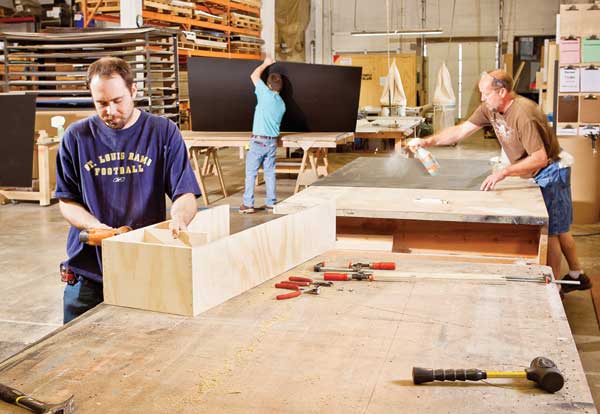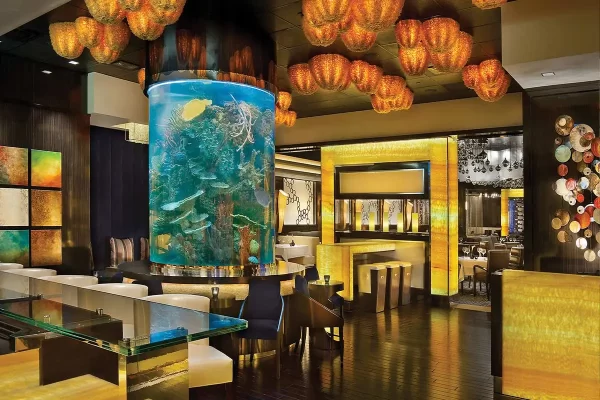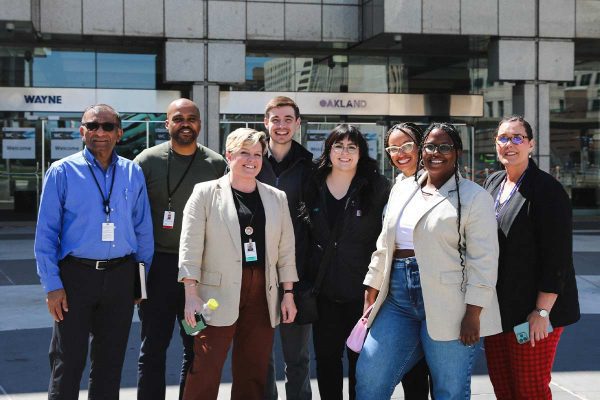Over the last few years, perhaps more than any segment of the exhibit industry, builders have had to redefine themselves in terms of the services they provide and the timetables they work under. As the relationship between builders and exhibitors continues to evolve into a new normal, the fabrication industry is beginning to adapt.
“I think we have to become more tradeshow marketers than tradeshow builders,” said Jim Obermeyer, partner at Reveal, a tradeshow and events marketing firm with complete fabrication capabilities. “Historically, we have been carpenters. That is where our part of the world came from. We were skilled carpenters, and now we have to be so much more than that.”
The need for exhibit builders to add marketing to its list of services comes directly from clients with a new focus on the bottom line of their tradeshow program.
“Where I see us spending more time due to this recession is improving return on investment (ROI),” said Obermeyer. “We have had a couple instances just recently when clients have asked: ‘why am I doing this at all?’ Clients want us to show them what they are getting from participating in tradeshows.”
The need to validate the money a client spends on its display is leading builders to entirely change the way they do business.
“We are introducing exhibits as a service to our current and potential clients,” said Al Coxe, CEO, Moose Exhibits, a custom designer of tradeshow exhibits. “We are going to rent to exhibitors so they just have to change out the graphics. We’ll reformat everything for each show. Next, we are going to make pre- and post-show ROI services part of what we sell. Third, we have ROI intro classes for those companies that are not acquainted with how it can work for them.”
For Moose, this represents a completely new corporate culture and one that is necessary for growth.
“Instead of looking at an exhibit as a job, which is how a lot of exhibit houses approach it, we want to do it as a complete service,” said Coxe. “And we are looking for like-minded clients. Our client base philosophy has completely changed.”
Partnering on a more intimate level with exhibitors can lead to challenges for the builder, especially when the timeline for tradeshow participation is not always understood.
“One of the challenges we have on the design side is timing by clients,” said Coxe. “Most of the work we do is driven by client response to requests for things like graphics. The client base is playing it much closer to the vest and I don’t know if we can change that as an industry. We can impose a fee, but that means we may lose a lot of work to others that don’t charge it. Getting clients more aware of their responsibility in the process can be a challenge.”
Another issue builders continue to face revolves around the request for proposal (RFP) process. Most clients are blind to the time and commitment necessary for builders to complete an RFP that includes enough research and design to truly represent a brand. An exhibitor may also send an RFP to five different exhibit houses, meaning four of them did nothing but sharpen their proposal skills.
“I wish our clients were more aware of everything we do in designing an exhibit and preparing proposals,” said Obermeyer. “We’re not getting paid for any of that unless we sell the job. Which means even if I sell 50 percent of those clients, I am still not getting paid for half of the work. That to me is one of the biggest issues facing this industry, the issue of intellectual capital and the ability to be compensated for it.”
Shrinking budgets also have caused builders to change the way they partner with exhibitors. Working within the constraints of the economy, while still providing value to the exhibitor can be a tricky balancing act.
“I have clients who normally do four shows and have now cut back to two shows for 2013,” said Coxe. “So what we have done is tell the exhibitor: ‘I will partner with you in this booth this year. You do one more show, and I’ll front the hard cost. You take care of the services, graphics and all of that, but I’ll front the hard costs for you. This will keep you out there and keep you working.’”
Coxe said this type of partnership can show dividends because it keeps his staff working and helps him keep clients.
Another issue builders face is marketing departments at some companies are losing control of their budgets to procurement departments. Trying to sell a creative solution to an individual who is basing his buying decisions on spending the least amount of money can be extremely difficult.
“It changes the whole RFP response and how you present your designs,” said Obermeyer. “We pitched a very large project about a year ago, and one of the main guys was more worried about print costs than what we were providing as far as image, branding and where it could take their company.”
In a difficult economy, exhibit builders have had to redefine how they fit into the tradeshow equation, but they are adapting to the new normal with a little creativity and a lot of hard work.
“It really is about us understanding that the build itself is insignificant,” said Obermeyer. “It is more about the client asking ‘why are we exhibiting, what are we trying to accomplish and how are we going to measure it.’ We have to look beyond what we used to do, which was just build.”






























